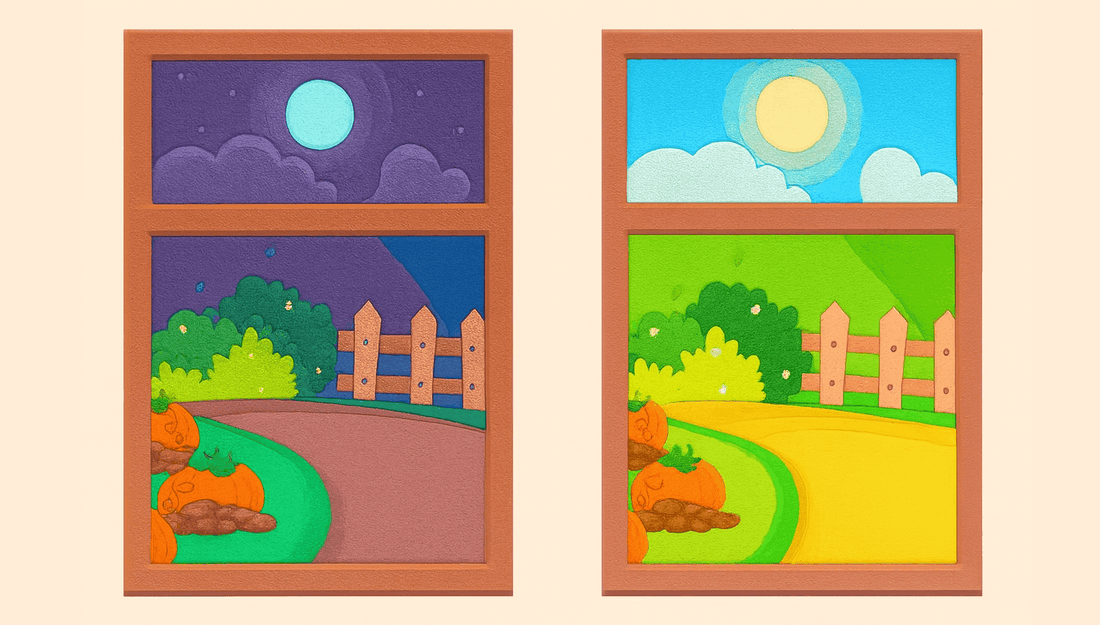
How We Use Opposites to Visualize
Share
At Speak Stories, we use opposites to spark curiosity, deepen understanding, and make language come alive. Opposites aren’t just vocabulary—they’re visual anchors, grammar guides, and storytelling tools. They help learners compare, contrast, and connect ideas in ways that feel intuitive and memorable.
Here’s how we bring opposites into our lessons:
- Visual Contrast We introduce new words by placing them side by side with their opposites. For example, learners might see a starry night sky next to a sunny daytime scene and be asked: “Which one is night? Which one is day?” This simple contrast helps learners grasp meaning quickly and associate words with vivid imagery. We layer in gestures, expressions, and voice to make the moment stick.
- Grammar in Action Opposites help us teach grammar by showing how meaning shifts. Learners explore polarity through sentences like “He likes pizza” vs “He doesn’t like pizza.” Or “She walks to school” vs “She doesn’t walk to school.” These contrasts reveal how verb forms and sentence structure change—and learners get to practice both sides through speaking, listening, and playful questioning.
- Storytelling with Tension and Surprise Opposites add drama and delight to our stories. Is Minmin awake or asleep? Is Lulu happy or angry? These choices invite learners to interpret, predict, and express themselves. The contrast builds suspense and keeps learners engaged, while reinforcing vocabulary and emotional nuance.
At Speak Stories, opposites are everywhere—in the visuals, the grammar, the questions, and the choices learners make. They help learners think critically, speak confidently, and remember what they’ve learned. And most importantly, they make the journey fun.
We’d love for you to experience it firsthand. Join us for a trial session and see how opposites can transform your language learning into something vivid, interactive, and unforgettable.
🔴 Choose your language and enroll.
